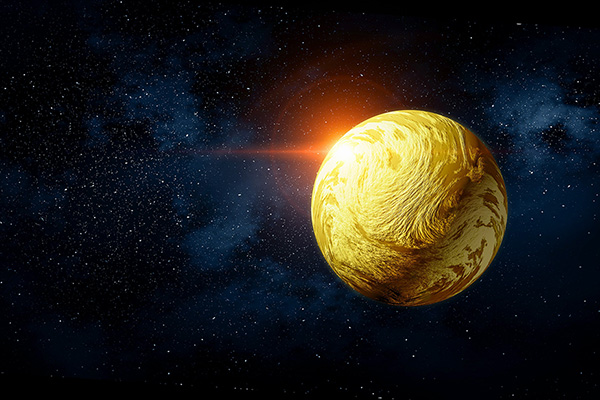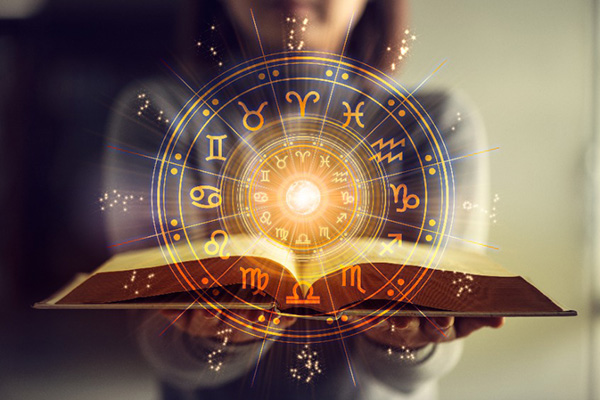ancient rome
The Spiritual Symbolism Of The Circle
 The circle has a profound and universal meaning in spirituality across cultures and belief systems. It symbolizes a variety of spiritual concepts and offers insights into the interconnectedness of life, the cyclical nature of existence, and the infinite potential for growth and transformation.
The circle has a profound and universal meaning in spirituality across cultures and belief systems. It symbolizes a variety of spiritual concepts and offers insights into the interconnectedness of life, the cyclical nature of existence, and the infinite potential for growth and transformation.
The circle represents unity and oneness. It is a symbol of completeness because it has neither beginning nor end. This circular continuity reflects the eternal nature of the soul and the interconnectedness of all living beings.
In Native American spirituality, for example, the medicine wheel represents balance and harmony between all aspects of life, including the physical, emotional, mental, and spiritual. Similarly, in Hinduism, the concept of samsara refers to the continuous cycle of birth, death and rebirth, with the circle symbolizing the eternal journey of the soul.
In Christianity the circle represents eternity and sacred union. It is referenced in the Bible as the shape of heaven, and as the beginning and ending of time. For Christian couples, the unending circle of a wedding ring is also the symbolic expression of their sacred, eternal union.
Embrace The Fall Equinox In Mind, Body And Soul
 As the vibrant colors of summer begin to fade and the air becomes crisper in the northern hemisphere, we stand on the threshold of the fall season of transition and transformation. It is a sacred time to prepare our minds, spirits, and bodies for the winter months ahead.
As the vibrant colors of summer begin to fade and the air becomes crisper in the northern hemisphere, we stand on the threshold of the fall season of transition and transformation. It is a sacred time to prepare our minds, spirits, and bodies for the winter months ahead.
Today’s autumnal equinox is a poignant reminder of the cycles of life and the eternal rhythm of nature. Steeped in ancient tradition and folklore, this celestial event occurs each year around September 21st and marks the point at which day and night are of nearly equal duration. Spiritually, it symbolizes equilibrium; a momentary pause in time between the warmth of summer and the cold of winter. It invites us to reflect on balance and harmony.
Ancient civilizations held a deep reverence for celestial events such as the autumnal equinox, which were often seen as significant markers of time and the cycles of nature. The traditional interpretations and beliefs surrounding the autumnal equinox varied from culture to culture, but they generally recognized its importance in agricultural, spiritual, and cultural contexts, and saw it as a time of transition, balance, and connection between heaven and earth.
In many agricultural societies, the autumnal equinox signaled the time of the year’s harvest. The ancient Egyptians and Babylonians celebrated this event with festivals and rituals dedicated to their agricultural deities. This often included feasting, music, and offerings to ensure a bountiful harvest.
Mercury Goes Retrograde Today
 Mercury goes retrograde today. This astrological phenomenon occurs three to four times per year, when the planet Mercury appears to move backwards through space. Energetically, it can be a period of frustration, error, confusion, and delay, and each cycle lasts about two to three weeks. Mercury retrograde begins again today and will last until September 14th.
Mercury goes retrograde today. This astrological phenomenon occurs three to four times per year, when the planet Mercury appears to move backwards through space. Energetically, it can be a period of frustration, error, confusion, and delay, and each cycle lasts about two to three weeks. Mercury retrograde begins again today and will last until September 14th.
In ancient Roman mythology, Mercury is a prominent god who rules business and finance, communication, travel, luck, swindlers, and thieves. He also serves as the guide of souls to the underworld and as a messenger of the gods. He is also known for his ability to take things apart and put them back together again. In astrology, the planet Mercury is therefore associated with communication, intellect, technology, and travel, so all of these aspects of life can be affected when it goes retrograde.
During Mercury retrograde, all aspects of communication, logic and reason can become more difficult and dysfunctional. Misunderstandings and mix-ups are more likely, and we are sometimes less able to think and express ourselves clearly. This can cause problems in our personal and professional relationships. We are also more prone to making mistakes or overlooking important details, leading to frustration and confusion.
Communication systems and technology are also affected by a Mercury retrograde. Digital communication devices and electronics may malfunction or break down, and internet and phone connections may be disrupted, making it more difficult to stay in touch. Travel may also become more challenging during this time, with delays, cancellations, and other unexpected obstacles.
The Sacred Tradition Of Smoke Cleansing
 Smoke cleansing is an ancient spiritual practice found in many faiths, cultures, and wisdom traditions all over the world. These age-old rituals, ceremonies and healing practices involve the burning of various aromatic plants, resins, and woods and have been practiced since humans first discovered fire. Traditionally ceremonies and rituals involving smoke are mostly used for energy cleansings and spiritual blessings, but the purposes, techniques and materials used vary widely among belief systems, tribes, nations, and cultures.
Smoke cleansing is an ancient spiritual practice found in many faiths, cultures, and wisdom traditions all over the world. These age-old rituals, ceremonies and healing practices involve the burning of various aromatic plants, resins, and woods and have been practiced since humans first discovered fire. Traditionally ceremonies and rituals involving smoke are mostly used for energy cleansings and spiritual blessings, but the purposes, techniques and materials used vary widely among belief systems, tribes, nations, and cultures.
The burning of incense, for example, was a revered practice in ancient Egypt as part of religious ceremonies. This practice continues today in the Roman Catholic church, with the burning of incense to amplify prayers and intentions.
In both Hinduism and Buddhism, incense is burnt for ritual offerings and rites, while in ancient China incense was burned during festivals and processions to honor ancestors and household gods, and in Japan it is part of the Shintō purification ritual.
In ancient Rome cinnamon was burnt during funerals. The Assyrians burned various aromatic woods in their homes, temples, and places of healing. In traditional Chinese medicine, the burning of agarwood and sandalwood is done to promote emotional wellness and physical healing.
One of the most well-known smoke cleansing traditions, especially in the United States, is known as smudging. To ‘smudge’ means ‘to make a smoky fire’ or ‘to emit a dense smoke.’ Smudging involves various purification and healing ceremonies originally practiced by the indigenous peoples of the Americas. Certain sacred herbs are traditionally used in smudging to purify and bless people and places, of which the most commonly used today is white sage or salvia apiana, also known as bee sage or sacred sage. It is an evergreen perennial shrub native to the southwestern United States and northwestern Mexico.
Remembering The Lost Wisdom Of Lemuria
 In 2013, the scientific journal Nature pusblished a report that a long-lost continent had been discovered hidden under the Indian Ocean island of Mauritius. This was furher confirmed by another study pusblished in 2017. What makes this unprecedented announcement especially interesting for the modern estoteric community is that it confirms the long-held belief that a lost continent called Lemuria, or the Land of Mu, did in fact exist, exactly as some scholars had speculated as far back as the mid-1800s.
In 2013, the scientific journal Nature pusblished a report that a long-lost continent had been discovered hidden under the Indian Ocean island of Mauritius. This was furher confirmed by another study pusblished in 2017. What makes this unprecedented announcement especially interesting for the modern estoteric community is that it confirms the long-held belief that a lost continent called Lemuria, or the Land of Mu, did in fact exist, exactly as some scholars had speculated as far back as the mid-1800s.
Although not yet confirmed by modern science, it is also believed that this lost continent was once inhabited by an extinct race of prehistoric humans known as Lemurians. It is believed the Lemurians coexisted with the dinosaurs. They are even said to have had four arms and very tall, large, adrogynous bodies.
The legend of Lemuria and its inhabitants gained increased interest in the esoteric community when Helena Blavatsky, the Russian mystic and co-founder of the Theosophical Society, published her famous book The Secret Doctine in 1888. In the second part of the book, she describes how humanity originated and evolved from seven “root races” dating back millions of years. According to Madame Blavatsky the third root race was the first to be truly human and they existed on the lost continent of Lemuria, while the fourth root race is said to have developed in Atlantis.
“Occultism rejects the idea that Nature developed man from the ape, or even from an ancestor common to both, but traces, on the contrary, some of the most anthropoid species to the Third Race man,” writes Blavatsky.
A Brief History Of Astrology
 The energies of the planets and stars affect us on many levels every day, whether we were aware of it or not. The earliest humans looked especially to the movements and phases of the Sun and Moon to guide them in their decisions about when to hunt, when to plant and harvest, and when to prepare for winter or migrate.
The energies of the planets and stars affect us on many levels every day, whether we were aware of it or not. The earliest humans looked especially to the movements and phases of the Sun and Moon to guide them in their decisions about when to hunt, when to plant and harvest, and when to prepare for winter or migrate.
From this evolved the practice and study of Astrology. The early civilizations of Mesopotamia were the first to observe the patterns formed by stars in the galaxy as long ago as 3000 BC, while Indian astrology began to emerge as far back as 1200 BC.
The original astrologers identified five ‘wandering stars,’ which together with the sun and moon became the seven original ‘planets.’ More planets were of course identified over time, as technology advanced to introduce the telescope and other astronomical devises.
The Babylonians are generally credited for first developing formal Astrology, because they developed astrological charts to predict the recurrence of the seasons and certain celestial events. Centuries later, Ancient Egypt and Greece discovered Babylonian Astrology, where it soon became highly regarded as a science and was eventually also embraced by the Romans, as well as in the Middle East. In time, its popularity spread throughout the rest of the world. Today, we still use the Roman names for the zodiac signs.
Meanwhile, separate systems of Astrology also emerged in India, China, and Mesoamerica. It remains unclear whether the Babylonian, Indian (known today as Hindu or Vedic Astrology) and Chinese systems of Astrology evolved in isolation and independently, or whether they mutually influenced each other. There are many similarities between these systems, but also many distinct differences. Scholars have been studying and debating this for centuries, but the matter remains inconclusive.